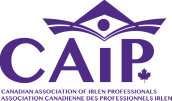Information for other professionals
|
Information for Optometrists
Irlen syndrome is a neurological dysfunction where bundles of neurons involved in the processing of visual information are linked with an hyperactivation in the visual cortex. Irlen syndrome is often confused with ADD/ADHD (30%) and dyslexia (46%). Ironically 30% of all psychotropic medications prescribed do not seem to be effective.
Irlen syndrome is not a problem of the eye, but of the brain. Optometric interventions will not resolve Irlen Syndrome-related complaints, just as an intervention aimed at Irlen syndrome will not have any effect on optometric issues. Consequently, Irlen practitioners require that a client pay a visit to an optometrist or an ophthalmologist ideally no more than six months prior to an Irlen assessment. There is a substantial body of research that has accumulated since the 1980s. The efficacy of Irlen Spectral Filters is supported by more than 100 studies led by independent researchers who published their results in peer-reviewed, respected professional journals in the fields of education, medicine, and psychology. Among those, we can find the Journal of Learning Disabilities, Australian Journal of Special Education, Perceptual and Motor Skills, Australian Journal of Learning Disabilities, Journal of Clinical & Experimental Neuropsychology, Journal of Research in Reading, Behavioral Optometry, and Ophthalmological and Behavioral Optics. A recent review established that of 62 selected studies, 56 had given positive results, 45 noted significant improvement in the case of specific reading skills, 11 gave positive results for optical accommodation, improved eye movements and reduced headaches and migraines. Studies are ongoing in Australia, Italy, Brazil, England, Switzerland, and New Zealand. Key studies presented below are worth mentioning and should elicit professional interest:
You may contact Dr Sandra Tosta, responsible for development and research at the Irlen Institute. [email protected] |

|
|